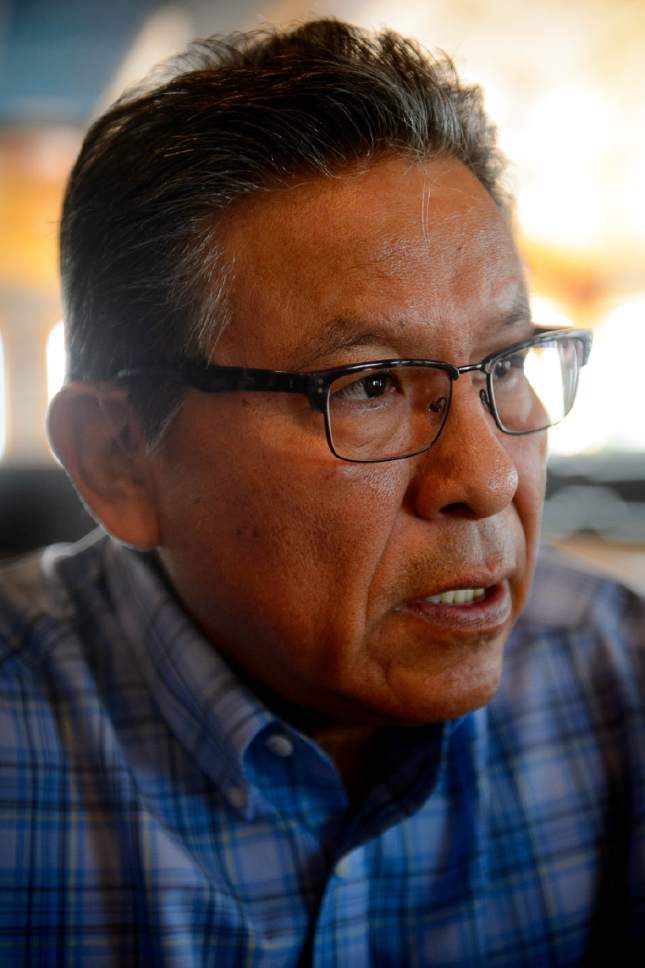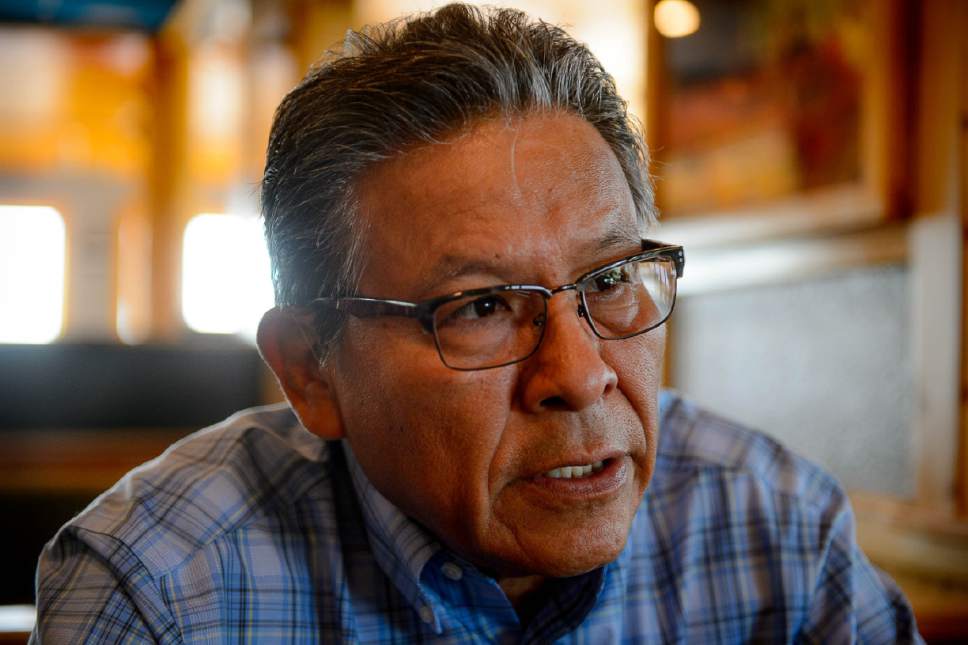This is an archived article that was published on sltrib.com in 2017, and information in the article may be outdated. It is provided only for personal research purposes and may not be reprinted.
Bluff • The politics surrounding Bears Ears National Monument are cut and dried.
Or so says Mark Maryboy, the first Navajo elected to the San Juan County Commission, who served four terms, stepping away from office in 2007.
"The leadership of Utah, from the beginning, has never supported preservation of [American Indian] sacred sites," Maryboy said Friday. "Utah's congressional delegation is not interested in protecting the environment."
The respected elder statesman of Utah Navajos made his comments as the Trump administration prepares to announce that it may rescind or drastically reduce the size of the 1.35 million-acre monument, designated by former President Barack Obama in December. The U.S. Interior Department's deadline for its recommendations on Bears Ears is Saturday.
The desecration of sacred American Indian sites began in 1879, Maryboy said, when the first Mormon settlers arrived in what is now San Juan County.
Pointing to the recent U.S. withdrawal from the Paris climate accord, Maryboy said, "Trump did not hesitate on climate change. To think he will have mercy for us — that ain't going to happen."
The former San Juan County commissioner was among what is expected to be hundreds of American Indians attending an inter-tribal gathering this weekend at the newly declared monument.
Maryboy, 61, said he was awakened to the issues surrounding his native land as a boy in 1968, when Robert Kennedy visited the Navajo Reservation during that year's presidential campaign.
"The elders were telling him we used to live in the Bear Ears region," Maryboy recalled. "It's a sacred place because when the U.S. soldiers came and rounded up the people — a lot of people fled to Bears Ears."
The outlook from the perspective of a young Navajo boy wasn't good, he said.
"The impression I got was the white people are evil and had no sympathy for us," he said. "And when I was a county commissioner I realized that control over the Native Americans was a real issue for the Mormons of Blanding and Monticello. They are afraid the natives will learn the system and take over."
Nonetheless, many Anglos in San Juan County discount Navajos and American Indians as a group, Maryboy said.
"[San Juan County Commissioner] Bruce Adams said his ancestors were the first people in San Juan County for 1,000 years," Maryboy said, "totally disregarding the people who have lived here for millennia."
In a separate interview, Adams disputed some of Maryboy's assertions, noting that the federal Bureau of Land Management has 11 protections for American Indian culture on the lands in question.
"We honor and support those protections" Adams said. "To say we didn't take [cultural values] into consideration is not true."
The San Juan County Commission has passed a resolution calling for the monument designation to be rescinded.
"A national monument is just another layer of control by the federal government," Adams said.
But Maryboy warned that opening up Bears Ears for extractive industries, such as mining and energy exploration, would be harmful for the environment and would not be sustainable economically.
"Oil and uranium are nonrenewable resources. They leave toxic materials that infect all living organisms," Maryboy said. "To drill a hole to generate revenue and desecrate the land is not good economic policy."
Bears Ears is the first monument to be reviewed under Trump's executive order instructing Interior Secretary Ryan Zinke to evaluate 27 large monuments designated since 1996. Recommendations for the others, including Utah's Grand Staircase-Escalante, are due in late August.





